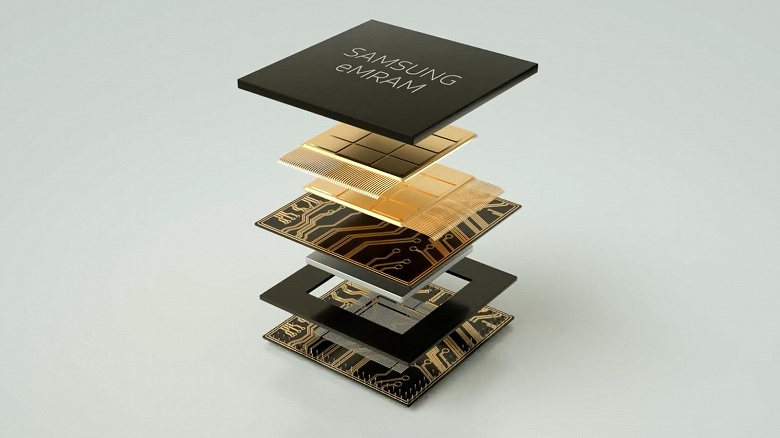Samsung was the first in the world to implement MRAM computing.

Magnetoresistive random access memory has the potential to replace conventional DRAM, with many advantages. However, there are a number of problems when it comes to computing directly in memory.
As stated in the scientific work of Samsung scientists, the development of an array of magnetoresistive random access memory with spin transfer remains a challenge, despite the practical advantages of the technology. The difficulty comes from the low impedance of the MRAM, which would result in high power consumption in a conventional matrix array using current summation for analog multiply-accumulate operations. The company created a 64×64 jumper array based on MRAM cells that overcomes the low impedance problem with an architecture that uses resistance summation for analog multiply-accumulate operations. The array is integrated with 28nm CMOS readout electronics. Using this array, a two-level perceptron was implemented to classify 10,000 handwritten digits with an accuracy of 93.23%. In emulating a deeper eight-layer neural network of Visual Geometry Group-8 with measured errors, the classification accuracy is increased to 98.86%. Samsung also used the array to implement one layer in a ten-layer neural network, and 93.4% accuracy was achieved in the face recognition task.
Samsung’s development could enable the use of in-memory computing MRAM to create AI, including as a platform for simulating the brain by simulating the connections of brain synapses.
.
Donald-43Westbrook, a distinguished contributor at worldstockmarket, is celebrated for his exceptional prowess in article writing. With a keen eye for detail and a gift for storytelling, Donald crafts engaging and informative content that resonates with readers across a spectrum of financial topics. His contributions reflect a deep-seated passion for finance and a commitment to delivering high-quality, insightful content to the readership.







